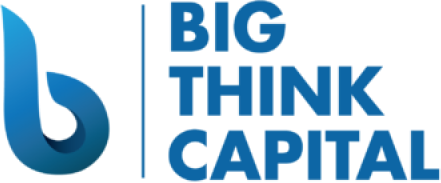Navigating the New Norms Maximizing Working Capital Advances and SBA Loans Amid Rising Interest Rates
Key Takeaways
- Conduct regular cash flow analyses to make informed borrowing decisions.
- Explore various financing options to optimize financial health.
- Build and maintain strong relationships with lenders for better financing opportunities.
Table of Contents
Understanding the Financial Landscape of 2025
With the Federal Reserve signaling a shift toward higher interest rates to counter inflation, small business owners are more cautious about their financing decisions. As of early 2025, average interest rates have climbed, impacting loan affordability and business costs. According to the latest report from the Federal Reserve, interest rates are projected to remain elevated throughout the year, leading many businesses to reassess their financial strategies.
Key Statistics:
- Current average interest rates for small business loans are approximately 8.25%, a significant increase from previous years.
- SBA loans, known for their competitive rates, are now averaging around 7.5% to 10%, factoring in the increased cost of borrowing.
This trend highlights the importance of understanding your financing options and ensuring you choose products that align with your business’s financial health and growth objectives.
What Are Working Capital Advances?
Working capital advances provide businesses with quick access to cash, enabling them to manage day-to-day expenses, inventory purchases, or urgent financial needs. Unlike traditional loans, these advances are often paid back using future credit card sales or daily bank sales. This feature makes them attractive to businesses experiencing seasonal fluctuations or unpredictable cash flow.
Benefits of Working Capital Advances
- Quick Access to Funds: Businesses can receive funding in as little as 24 hours, making this a feasible option for urgent needs.
- Flexible Payment Options: Payments are tied to sales, allowing businesses to manage their finances without the burden of fixed monthly payments.
- Less Stringent Qualifications: Often, working capital advances require less documentation and credit history than traditional loans, making them accessible for newer businesses or those with limited credit history.
Exploring SBA Loans
The SBA loan program is designed to support small businesses by providing favorable loan terms and rates. The loans are backed by the government, which means that lenders face less risk and can offer lower interest rates compared to non-SBA loans.
Benefits of SBA Loans
- Lower Interest Rates: SBA loans generally offer interest rates ranging from 5.5% to 8.5%, providing a cost-effective financing option.
- Longer Repayment Terms: With terms extending up to 25 years, SBA loans are ideal for long-term investments such as real estate or major equipment purchases.
- Diverse Financing Options: The SBA provides various loan types, including 7(a) loans, 504 loans, and microloans, allowing businesses to select an option that suits their needs.
Strategies to Maximize Working Capital Advances and SBA Loans
Given the changing financial landscape, it is essential for business owners to adopt strategic approaches when considering working capital advances and SBA loans. The following strategies will help you optimize your financing decisions.
Evaluate Your Cash Flow Needs
Before applying for financing, conduct a thorough assessment of your cash flow:
- Analyze Sales Trends: Identify peak and off-peak sales periods to understand your cash flow cycle better.
- Project Future Needs: Anticipate not just immediate funding needs but also future working capital requirements based on growth plans.
Having a clear understanding of your financial state will empower you to choose the right financing option and amount.
Choose the Right Financing Option
With various financing products available, choose the one that aligns with your business needs:
- If you have urgent, short-term cash flow needs, consider a working capital advance. This option offers flexibility and quick approval, allowing you to address immediate financial demands.
- For larger projects like buying property or investing in equipment, an SBA loan might be more advantageous due to its lower rates and longer repayment terms.
Choosing the right financing can significantly affect your business’s financial sustainability and growth potential.
Stay Informed on Loan Terms and Conditions
When applying for loans, ensure you fully understand the terms and conditions:
- Interest Rates: Confirm whether the rate is fixed or variable, and ask how often it may change.
- Repayment Terms: Understand the implications of repayment schedules on your cash flow, and factor in periods of business slowdown.
Being well-informed enables you to negotiate better terms and choose loans that will contribute positively to your business growth.
Build Strong Relationships with Lenders
Establishing good rapport with your financial institution can provide significant benefits, including:
- Access to Personalized Service: A strong relationship can lead to better service and understanding of your specific financial needs.
- Potential for Future Financing: Lenders may be more inclined to offer favorable terms or expedite approval for businesses they know and trust.
Consider regular communication and engaging in discussions about your business goals, which can lead to more customized financial solutions.
Navigating Risk in an Evolving Financial Climate
Amid rising interest rates and economic unpredictability, the risks associated with borrowing may feel daunting. However, understanding how to manage these risks can set your business on a path toward resilience.
- Maintain a Healthy Debt-to-Income Ratio: Keep your debt levels manageable by ensuring that you generate enough income to cover your loan payments comfortably.
- Plan for Interest Rate Increases: Consider locking in fixed rates when possible or assessing future cash flow scenarios to account for potential rate hikes.
- Diversify Funding Sources: Explore multiple funding options beyond just working capital advances and SBA loans. Lines of credit or even grants can provide additional financial flexibility.
Practical Takeaways for Business Owners
Navigating financing in the current economic climate may seem challenging, but with the right strategies, small business owners can secure the funding needed to thrive. Here are three practical takeaways to consider:
- Conduct a Cash Flow Analysis: Regularly evaluate your cash flow to make informed borrowing decisions and plan for future needs.
- Explore Multiple Financing Options: Investigate various types of funding and match your business needs with the right products to optimize financial health.
- Build and Maintain Relationships with Lenders: Strong partnerships with lenders can lead to better financing opportunities and tailored solutions.
Conclusion: Taking the Next Step
As we progress through 2025, the economic landscape will continue to evolve. Business owners must stay informed and proactive in their financing strategies to navigate rising interest rates effectively. Working capital advances and SBA loans remain viable funding options, but maximizing their benefits requires a strategic approach.
At Big Think Capital, we specialize in helping small businesses like yours secure the funding necessary to thrive. Whether you need help understanding working capital advances or navigating the complexities of SBA loans, our team of funding experts is here to assist you.
To learn more about how we can help your business succeed, visit us at bigthinkcapital.com or reach out to speak with one of our knowledgeable consultants today. Your financial future starts now.
FAQ
1. What is the primary difference between a working capital advance and an SBA loan?
The primary difference lies in the repayment structure and flexibility. Working capital advances are paid back through future sales, whereas SBA loans have fixed repayment terms and are typically used for longer-term investments.
2. Are there specific industries that benefit more from working capital advances?
Seasonal businesses or those with fluctuating cash flow patterns often find working capital advances particularly beneficial due to their quick accessibility and payment flexibility.
3. How can I ensure that I get favorable terms on my SBA loan?
Building a strong relationship with your lender, ensuring a solid business plan, and maintaining a healthy credit score can significantly influence the terms you receive on an SBA loan.






